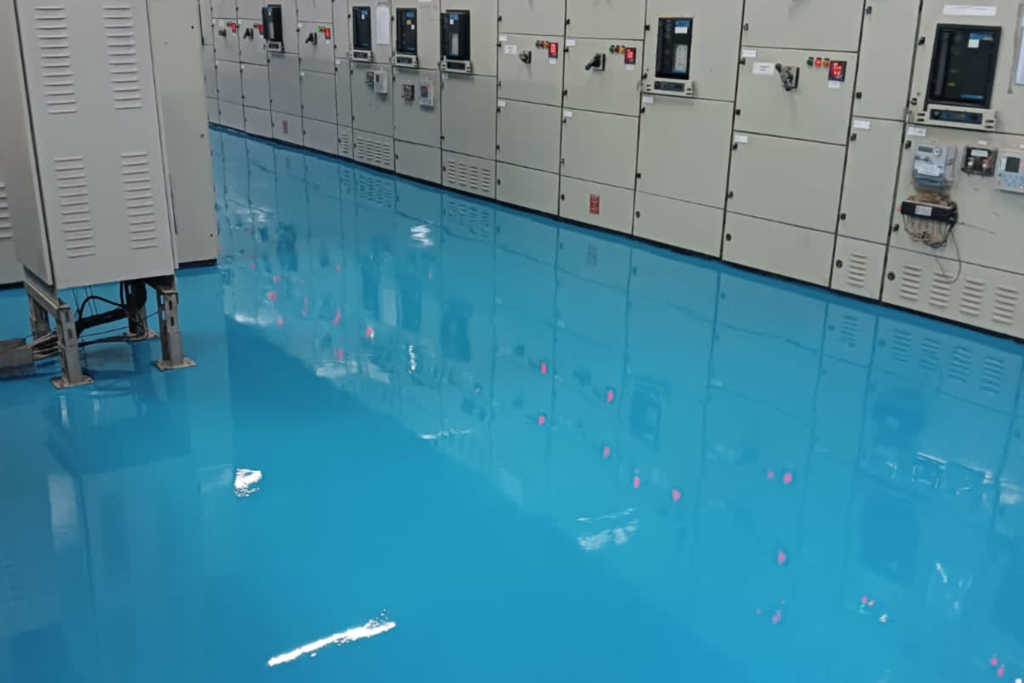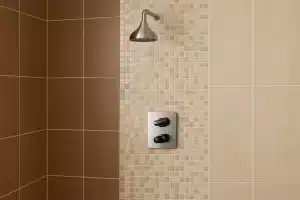Control panel floors are an essential part of most industrial and commercial facilities. They provide a safe and secure environment for workers to operate and maintain the electrical systems. Therefore, it is essential to ensure that the floors are insulated to protect personnel from accidental contact with hazardous electrical components. Two common methods to achieve this are using rubber mats or dielectric insulation coatings. In this post, we will discuss the advantages of dielectric coating for floor compared to rubber mats and how to apply them.
Why dielectric insulated coating is needed?
Dielectric insulated coating is a necessity in high-voltage environments to prevent electric shocks to workers who work in such areas. Rooms such as Switch Rooms, AC Plant Rooms, Power Transformer Rooms, LT & HT Labs, Generator Rooms, all kinds of Electrical Substations, Lift Machine Rooms, Electrical Panels, X-Ray Plant Rooms, and areas around Bus Bars are prone to high-voltage electricity. Workers in these areas are at risk of being electrocuted if proper safety measures are not put in place. Dielectric insulated coatings provide a layer of protection that prevents electricity from flowing through the body of a worker in the event of an electrical accident. Without such insulation, workers are at risk of severe injuries, including burns, heart failure, and even death. Therefore, dielectric insulated coating is an essential safety measure that should be employed in all high-voltage environments.
Introduction to Dielectric Coatings and Rubber Mats
Dielectric coatings are a non-conductive coating applied to the surface of electrical components to protect them from electrical shocks and short circuits. These coatings are usually made of polymers, silicone, or epoxy, and they have a wide range of applications, from providing electrical insulation to protecting against corrosion.
Rubber mats are commonly used in control panel flooring to protect electrical systems from damage and provide insulation. These mats are typically made of rubber or plastic, and they are designed to absorb shocks, reduce electrical noise, and provide a non-slip surface.
Advantages of Dielectric Insulation Coating for Control Panel Floors
Dielectric insulation coating has many advantages when used on control panel floors:
- It is non-conductive, meaning it will not allow an electric current to pass through it. This is essential in protecting personnel from accidental contact with hazardous electrical components.
- It is highly resistant to abrasion and corrosion, making it a durable and long-lasting option.
- It can be applied in various colours, making it easier to distinguish between different areas of the floor.
- It is also resistant to a wide range of chemicals, making it suitable for various applications.
In addition, dielectric coatings are much thinner than rubber mats, making them easier to install and removing the need for additional insulation. Throughout the long term, this could save both cash and time.
The Importance of Electrical Insulation Coating
Electrical insulation coating is essential for any control panel flooring. Without proper insulation, electrical components can be damaged by electrical shock or short circuits, leading to costly repairs or replacements.
Dielectric coatings provide superior electrical insulation compared to rubber mats. These coatings are designed to absorb electrical shocks and reduce the risk of short circuits, making them the ideal choice for control panel flooring.
Disadvantages of Rubber Mats
Rubber mats are a popular choice for control panel floors, but they have some notable disadvantages:
- They are not as durable as dielectric insulation coatings and are prone to wear out over time.
- They can be difficult to clean and maintain.
- They are not as effective at protecting personnel from electric shocks as they do not provide a complete barrier between electrical components and personnel.
- They require frequent replacement and can be costly in the long run.
Cost Comparison Between Dielectric Insulation Coating and Rubber Mats
When it comes to cost, dielectric insulation coating is generally more expensive than rubber mats. All the same, it is crucial to evaluate the long-term consequences. It is more durable and does not require frequent replacement, making it a more cost-effective option in the long run. In addition, it is also more effective at protecting personnel from electric shocks, which can help to reduce the risk of injury.
Safety And Compliance Requirements for Dielectric Insulation Coating
When installing dielectric insulation coating, it is important to adhere to safety and compliance requirements:
- The coating should be tested for electrical continuity before it is put into use.
- The coating should be applied in accordance with the manufacturer’s instructions.
- Personnel should wear protective clothing, such as gloves when applying the coating.
- The area should be well-ventilated to ensure the safety of personnel.
- The coating should be inspected regularly to ensure it is in good condition and not causing any issues.
Types of Dielectric Coatings
Various types of dielectric coatings are available, including silicone, epoxy, and polyurethane. Each coating type has advantages and disadvantages, so choosing the right one for your needs is essential.
- Silicone coatings are the most common dielectric coating type, typically used in high-voltage applications. They are highly resistant to corrosion, temperature, and moisture, making them ideal for control panel flooring.
- Epoxy coatings are also commonly used in control panel flooring. They provide excellent electrical insulation and are highly resistant to abrasion, making them a great choice for areas with heavy foot traffic.
- Polyurethane coatings are a relatively new type of dielectric coating, and they are rapidly becoming the preferred choice for control panel flooring. They offer superior electrical insulation, are highly resistant to abrasion and wear, and are easy to apply.
The Importance of Safety and Testing
Safety is of utmost importance when it comes to controlling panel flooring. It is vital to have the flooring tested regularly to ensure that it provides adequate insulation and protection. If the flooring fails to meet the required standards, it should be replaced or repaired immediately.
Conclusion
Dielectric insulation coatings provide a durable and cost-effective solution for control panel floors compared to rubber mats. They provide excellent electrical insulation and are resistant to abrasion and corrosion. They can also be applied in various colours and are non-conductive, making them ideal for high-voltage applications. When installing dielectric insulation coating, it is essential to adhere to safety and compliance requirements to ensure personnel safety.
Furthermore, Floorkrete’s Electrogard is a high-quality dielectric insulation coating designed to endure severe weather circumstances. It has outstanding adhesion, chemical resistance, and abrasion resistance, making it an excellent option for various sectors.
If you’re looking for a dependable and effective method to safeguard your control panel flooring and employees from electrical hazards, Floorkrete’s Electrogard dielectric insulation coating is a must consider. Electrogard is an excellent option for control panel flooring because of its superior electrical isolation qualities.





